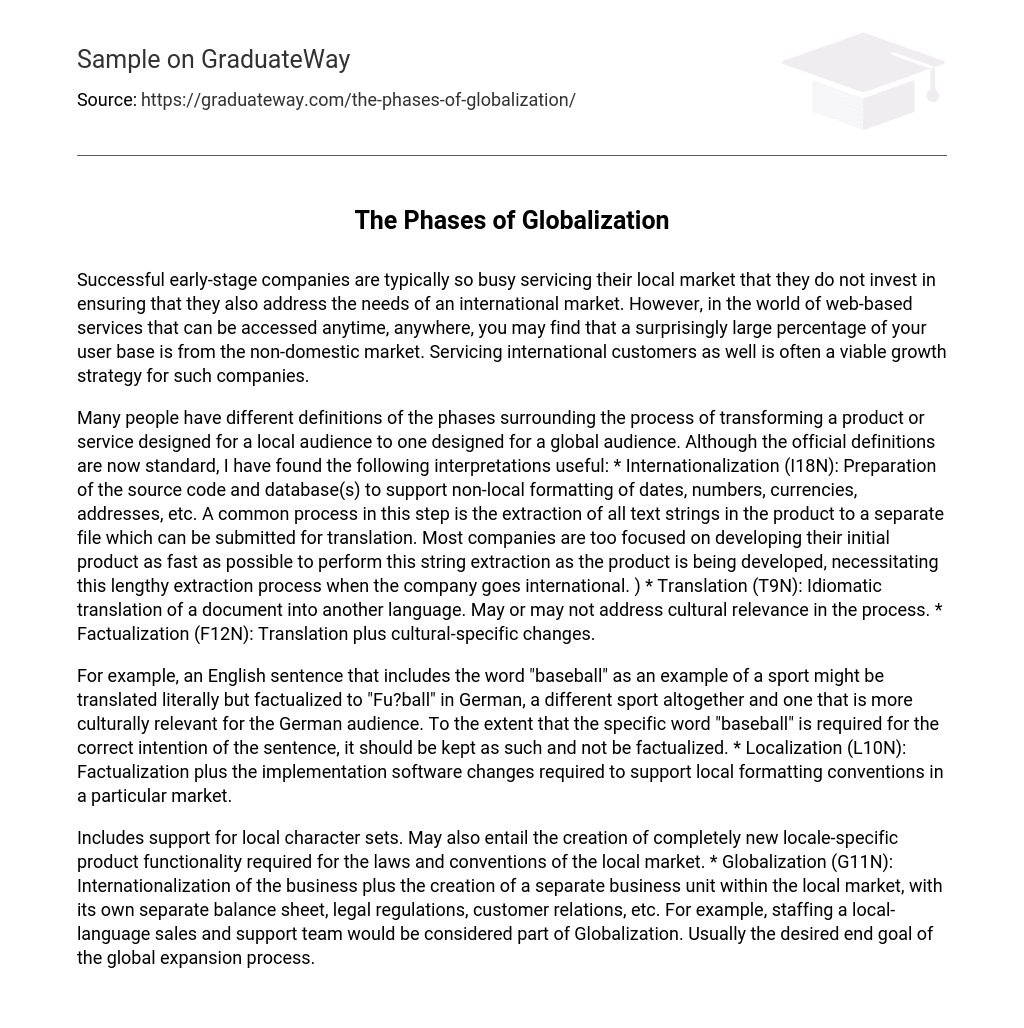Successful early-stage companies are typically so busy servicing their local market that they do not invest in ensuring that they also address the needs of an international market. However, in the world of web-based services that can be accessed anytime, anywhere, you may find that a surprisingly large percentage of your user base is from the non-domestic market. Servicing international customers as well is often a viable growth strategy for such companies.
Many people have different definitions of the phases surrounding the process of transforming a product or service designed for a local audience to one designed for a global audience. Although the official definitions are now standard, I have found the following interpretations useful: * Internationalization (I18N): Preparation of the source code and database(s) to support non-local formatting of dates, numbers, currencies, addresses, etc. A common process in this step is the extraction of all text strings in the product to a separate file which can be submitted for translation. Most companies are too focused on developing their initial product as fast as possible to perform this string extraction as the product is being developed, necessitating this lengthy extraction process when the company goes international. ) * Translation (T9N): Idiomatic translation of a document into another language. May or may not address cultural relevance in the process. * Factualization (F12N): Translation plus cultural-specific changes.
For example, an English sentence that includes the word “baseball” as an example of a sport might be translated literally but factualized to “Fu?ball” in German, a different sport altogether and one that is more culturally relevant for the German audience. To the extent that the specific word “baseball” is required for the correct intention of the sentence, it should be kept as such and not be factualized. * Localization (L10N): Factualization plus the implementation software changes required to support local formatting conventions in a particular market.
Includes support for local character sets. May also entail the creation of completely new locale-specific product functionality required for the laws and conventions of the local market. * Globalization (G11N): Internationalization of the business plus the creation of a separate business unit within the local market, with its own separate balance sheet, legal regulations, customer relations, etc. For example, staffing a local-language sales and support team would be considered part of Globalization. Usually the desired end goal of the global expansion process.





